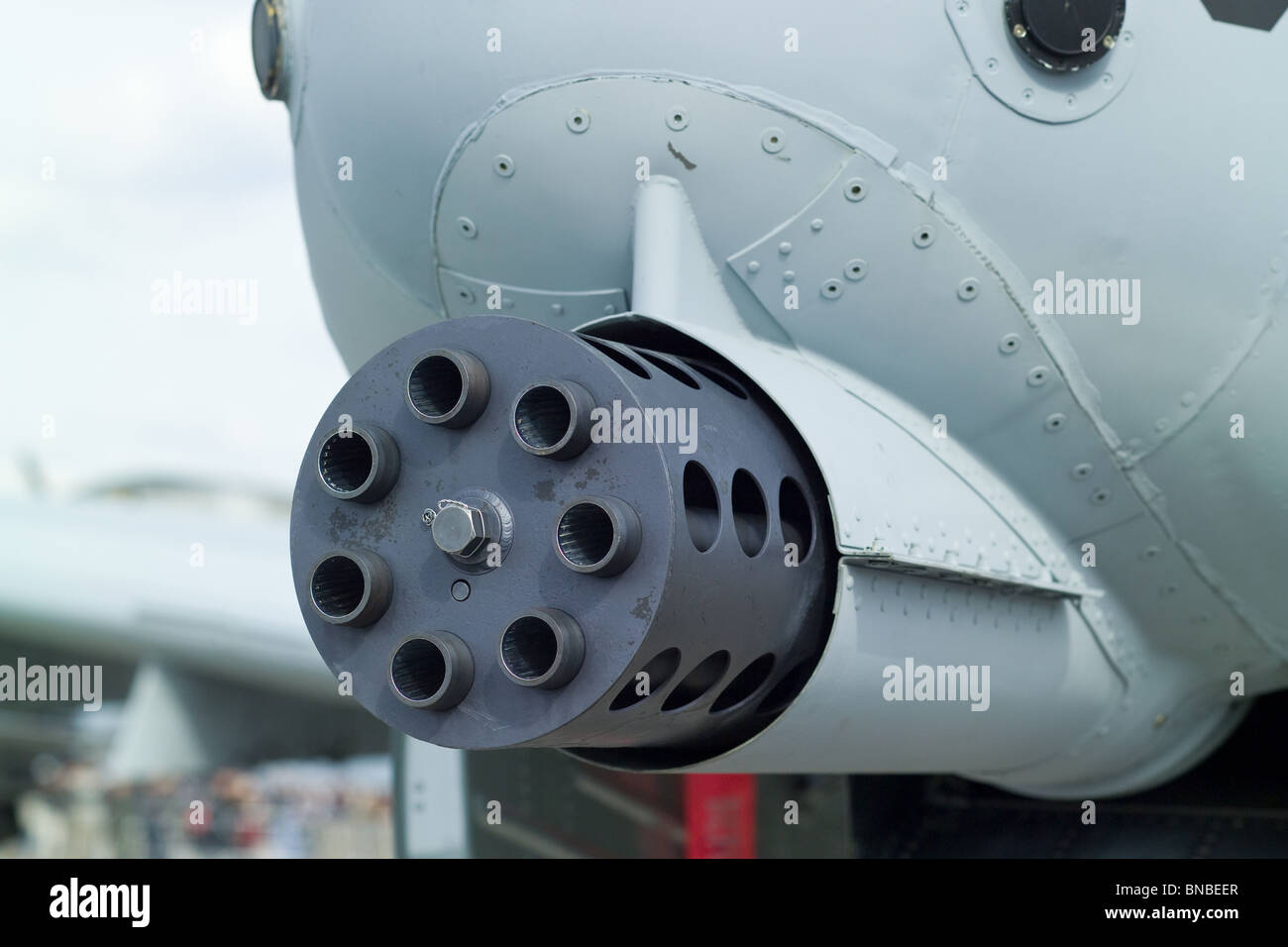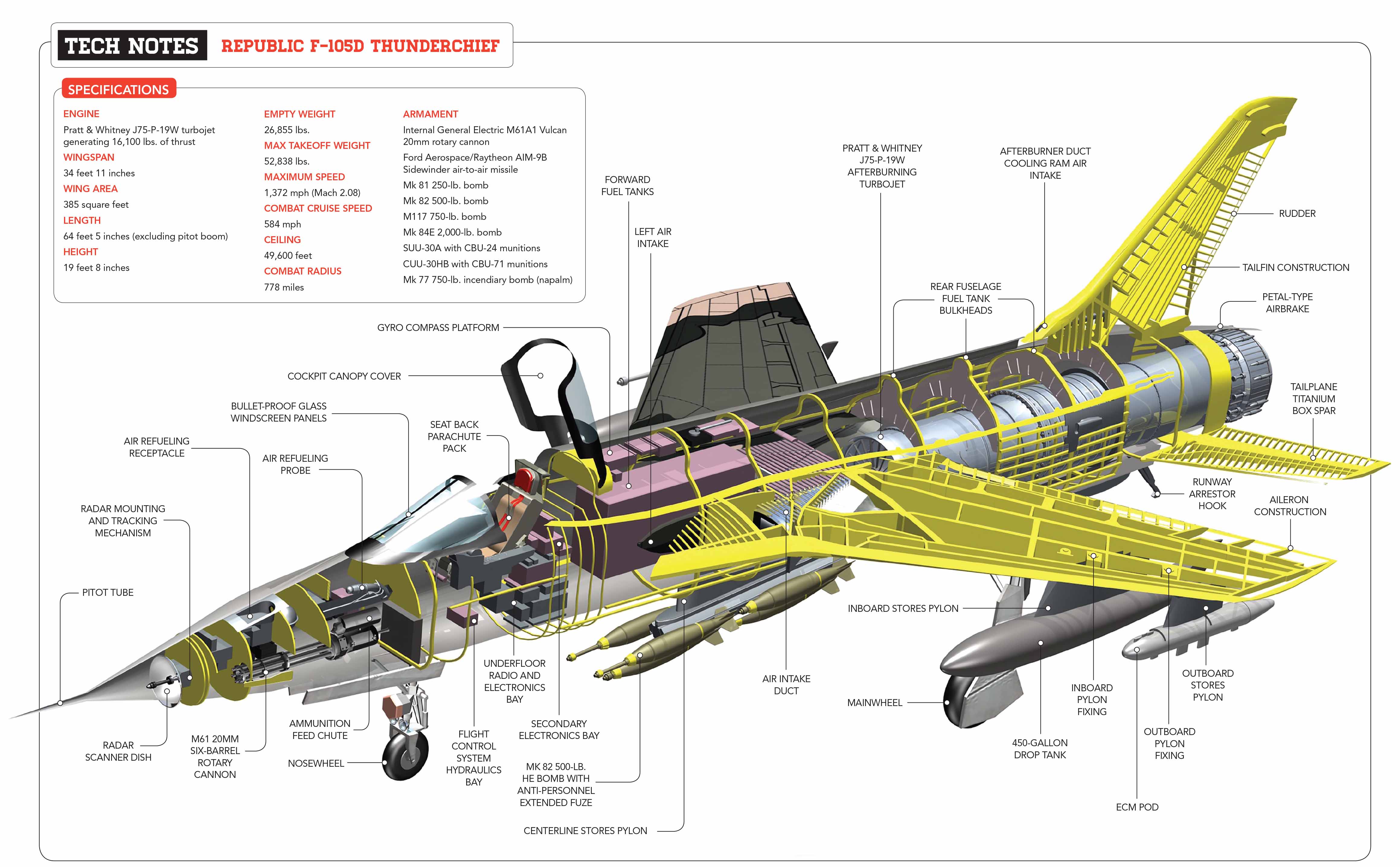Vulcan Cannon A10 - The Geral Electric GAU-8/A Avger is a 30mm hydraulically actuated sev-barrel Gatling style autocannon mounted primarily on the United States Air Force's Fairchild Republic A-10 Thunderbolt II. Designed to destroy a wide variety of targets, the Avger offers high-powered shells with a high rate of fire. GAU-8/A is also used in the Keeper CIWS weapon system, which provides defense against short-range threats such as cruise missiles, aircraft and fast-moving surface ships. The GAU-8/A is manufactured by Geral Dynamics.
The GAU-8 was created as a companion program to the A-X (or Attack Experimental) competition that produced the A-10. Ball characteristics were determined in 1970,
Vulcan Cannon A10
General Electric and Philco-Ford offer competing designs. Both A-X prototypes, the YA-10 and Northrop YA-9, were designed to unify the weapon, although they were not available during the initial competition; The M61 Vulcan was used as a temporary replacement. Once complete, the GAU-8 wheel assembly (correctly called the A/A 49E-6 Gun System)
Automatic Cannon Hi Res Stock Photography And Images
It represents approximately 16% of the A-10's unassembled body weight. Because the gun plays an important role in maintaining the A-10's balance and center of gravity, a jack should be installed under the tail of the aircraft each time the gun is removed for inspection to prevent the aircraft from tipping backwards.
The gun is partially mounted port side, starboard at the 9 o'clock position and with a working gun barrel in the flight line of the aircraft. The front landing gear is located on the starboard side.
The pistol is loaded using Syn-Tech's linked tube carrier GFU-8/E 30mm Ammunition Loader carrier. This vehicle is different from the A-10 and GAU-8.
An A-10 with a service gun GAU-8/A in 1977. Manufactured by Geral Electric, although Geral Dynamics Armamt and Technical Products have been responsible for production and support since 1997, when the class was sold to Geral by Lockheed Martin. Strength.
Gau 8/a Avenger > National Museum Of The United States Air Force™ > Display
The GAU-8 itself weighs 620 pounds (280 kg), but the entire gun with the feed system and drum weighs 4,029 pounds (1,828 kg) with a maximum ammunition load. It is 19 ft 5+1⁄2 inches (5,931 m) long from the barrel to the rear of the ammunition system, and the ammunition drum alone is 34.5 inches (88 cm) in diameter and 71.5 inches (1.82 m) long.
Power to operate the gun is provided by twin hydraulic motors compressed from two independent hydraulic systems. The magazine can hold 1,174 rounds, but the standard number is 1,150. The muzzle velocity for firing armor-piercing rounds is 1,013 m/s, roughly the same as the M61 Vulcan 20mm round, which gives the gun over 200 kilojoules of muzzle energy.
A typical ammunition mix for anti-armor use is a five-to-five combination of the PGU-14/B Armor Piercing Incdiary with a bullet weight of approximately 14.0 oz (395 grams or 6,096 rounds) and the PGU-13/B. High Explosive Fire (HEI) projectiles with a projectile weight of approximately 13.3 oz (378 grams or 5,833 rounds).

Another innovation in the design of the GAU-8/A ammunition is the use of aluminum alloy cases instead of domestic steel or copper.
When Pigs Fly: The A 10 \
This alone adds 30% to the ammo capacity of the given weight. The bullets contain a plastic drive belt to improve barrel life. The shells are 11.4 inches (290 mm) long and 0.69 kg or more in weight.
The Avger's rate of fire was initially selectable, 2,100 rounds per minute (rpm) on low or 4,200 rpm on high.
At this rate, it takes 18 seconds of continuous fire to discharge the magazine. In practice, the cannon is limited to one- and two-second bursts to prevent overheating and conserve ammo; Barrel life is also a factor, as the USAF sets a minimum lifespan of at least 20,000 rounds for each set of barrels.
There is no technical limit to the amount of time the weapon can be fired continuously, and the pilot can gradually expand the individual ammunition load in a single burst without damaging the weapon system or causing adverse effects. However, this constant rate of fire can significantly shorten barrel life and require more barrel inspection and result in shorter replacement intervals.
How The A 10 Warthog's Legendary Gatling Gun Really Works
Each barrel is a very simple non-automatic design with its own breech and bolt. Like the original Gatling gun, the rubber firing loop is chambered and operated by muzzle rotation.
The GAU-8/A ammo feeder is contactless, reducing weight and avoiding the potential for mass jamming. The feed system is doubled, allowing the spt sleeves to be fed back into the ammunition barrel.
Additionally, putting empty cans back into the drum has less effect on the aircraft's gravity than removing them. The feeding system is based on the system developed for the subsequent assembly of the M61, but saves weight by using more advanced design techniques and materials throughout.

The GAU-8/A is extremely accurate and can fire up to 3,900 rounds per minute without any problems. The 30mm projectile has twice the range, half the aiming time, and three times the weight of shells fired with guns mounted in close air support.
Northern Arms Llc. A 10 Warthog 30mm Cannon Collectors Dummy Round, Sports & Outdoors
A GAU-8/A Avger Gatling gun next to a Volkswagen Beetle. Removing the mounted GAU-8 from the A-10 requires first placing a jack under the tail of the aircraft, as the cannon makes up a large portion of the aircraft's forward weight.
The GAU-8/A's muzzle velocity is roughly the same as the M61 Vulcannon, but the GAU-8/A uses heavier ammo and has higher gun penetration. The bullet's 4,000 feet (1,200 m) flight time is 30 percent less than the M61 bullet; After leaving the barrel, the GAU-8/A projectile slows down slightly and drops slightly from a distance of about 3.0 m.
The GAU-8/A fitted to the A-10 is rated at "5 mil, 80 percent", meaning 80 percent of the shells fired will strike the inside of the cone at an angle of five milliradians; this equates to a circle 40 feet (12 m) in diameter in a 4,000 feet (1,200 m) projectile area.
Since the firing force of the gun can propel the aircraft from the wheel when fired, the gun is mounted on the non-centerline side, slightly port side of the fuselage midline, with the active firing nozzle located directly on the mainline of the aircraft.
Why Pilots Loved The F 105 'thud' Despite Its Vulnerability
The blast barrel is also slightly below the aircraft's center of gravity and is not visible in a line 2 degrees below the aircraft's flight line. This arrangement fully integrates the reverse force, preventing changes in aircraft altitude or thrust. This configuration also leaves room for the front landing gear mounted slightly laterally on the starboard side of the nose.
The GAU-8/A uses kickback adapters. They are the interface between the gun housing and the gun seat. By absorbing (compressing) the recoil force, it dissipates the recoil force and recoil force transferred to the support structure when the gun is fired.
The A-10's jeans were initially prone to catching fire when the gun was fired. If the GAU-8 is fired, the smoke from the gun could stall the engines, and this happened during the first flight test.

Gun exhaust does not contain oxygen and can cause gas turbines to burn. The A-10 level now has a self-supporting ignition section. When the gun is fired, the igniters light up to reduce the possibility of flame.
Happy 50th Birthday A 10 Warthog :: Guns.com
Slightly more than the A-10 TF34's output of 9,065 lbf (40.3 kN) per engine.
Although this recoil force is significant, the cannon blast actually only slows the aircraft a few miles per hour in level flight.
Some of the GAU-8/A technology was transferred to the smaller caliber 25mm GAU-12/U developed for the AV-8B Harrier II aircraft. The GAU-12 is approximately the same size as the 20mm M61. GE also developed the GAU-13/A, a four-barreled weapon that used parts of the GAU-8/A and was tested in a spin-off like the GPU-5/A. The Avger also forms the basis of the Dutch-developed CIWS naval air defense weapon. No aircraft revolves or is contemplated except the A-10, which carries a full Avger system. General Electric's 30-millimeter GAU-8 Avenger has been the primary armament of US ground attack aircraft. More on the Air Force's A-10 Thunderbolt II. It has also been equipped with the Sea Sentinel close-range weapon system in 40 years.
The GAU-8 has seven independent barrels with mechanical rotary locking bolts. The gun is powered by a pair of electric motors and can theoretically fire depleted uranium rounds that destroy up to 4,200 tanks per minute.
Gau 8 Avenger: The Cannon That Powers The A 10 Warthog
In the 1960s, the Air Force decided it needed a specialized and affordable ground attack aircraft capable of destroying armored vehicles and fixed areas in close support of friendly ground forces.
The threat of a major Soviet offensive in Western Europe required an aircraft and artillery system capable of engaging and destroying large battle tanks and armored personnel carriers.
In September 1966,

A10 vulcan cannon, m61 vulcan cannon, 20 mm m61 vulcan cannon, cannon a10, vulcan cannon, vulcan rotary cannon, m61a1 vulcan cannon, vulcan cannon firing, 20mm vulcan cannon, nerf vulcan cannon, a10 30mm cannon, a10 warthog 30mm cannon
0 Comments